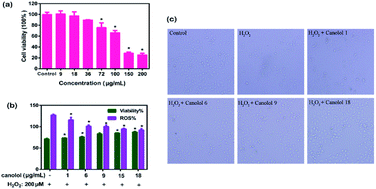Protective effects of canolol against hydrogen peroxide-induced oxidative stress in AGS cells
Abstract
Oxidative stress, as mediated by ROS, plays a critical role during the occurrence and development of chronic diseases. Canolol is a phenolic compound recently isolated from crude canola oil with powerful antioxidative properties. In this paper, the effects of canolol on hydrogen peroxide (H2O2)-induced oxidative stress in AGS cells were investigated. Cell viability experiments showed negligible cytotoxicity of canolol to AGS cells within a dose of 100 μM. Additionally, it was found that canolol could effectively prevent the oxidative injury caused by H2O2. The pretreatment of AGS cells by canolol also resulted in a reduction in ROS and MDA levels, and LDH release. The survival of cells and the activities of superoxide dismutase (SOD), glutathione peroxidase (GSH) and catalase (CAT) were significantly increased with the pre-incubation of AGS cells with canolol before H2O2 exposure. Consequently, apoptosis and loss of mitochondrial membrane potential of the AGS cells were alleviated, and H2O2-induced caspase-3 activation was inhibited. Therefore, it was concluded that canolol effectively protected AGS cells against H2O2-induced oxidative stress and its antioxidative effect was significant.



 Please wait while we load your content...
Please wait while we load your content...